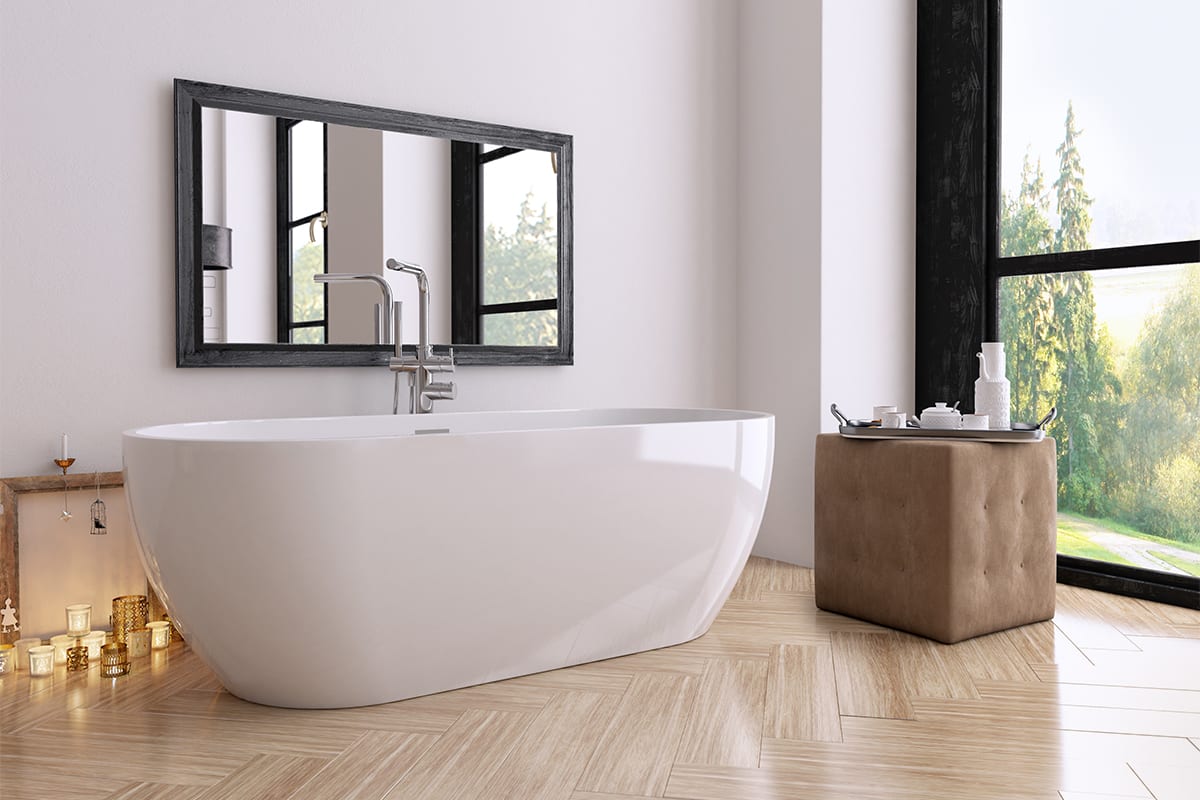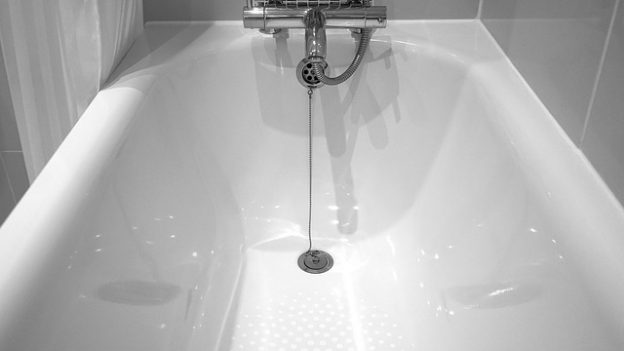Understanding the what are tubs made of is crucial for selecting the right bathtub for your needs. The material determines the tub’s durability, maintenance requirements, heat retention, and overall aesthetic appeal. From acrylic and fiberglass to cast iron and natural stone, each material offers unique advantages and drawbacks. This guide will help you understand the various bathtub materials and how they impact your bathing experience.

Understanding the Importance of Material Selection
Selecting the right material for your bathtub is essential to ensure it meets your needs for durability, maintenance, and comfort. Different materials offer varying levels of heat retention, resistance to stains and scratches, and overall longevity. Additionally, the material affects the tub’s weight, installation process, and cost. By understanding the characteristics of each material, you can make an informed decision that enhances your bathroom’s functionality and style.
Common Materials Used in Tub Manufacturing
Acrylic Tubs

Description: Acrylic tubs are made from vacuum-formed acrylic sheets that are reinforced with fiberglass. They are lightweight and come in a variety of shapes and sizes. Acrylic bathtubs are popular due to their affordability and versatility.
Benefits: They are highly resistant to stains and scratches, making them easy to clean and maintain. They offer good heat retention, ensuring your bathwater stays warm longer. Additionally, acrylic is a non-porous material, reducing the risk of mold and mildew growth.
Drawbacks: They can feel less stable compared to heavier materials like cast iron. They may require more support during installation to prevent flexing. Over time, the surface can be susceptible to discoloration and may require occasional polishing to maintain its appearance.
Fiberglass Tubs

Description: Fiberglass tubs are made from reinforced plastic that is molded into shape and coated with a gel coat resin. They are lightweight and budget-friendly, making them a common choice for many homeowners.
Benefits: Fiberglass bathtubs are easy to install due to their light weight. They are also relatively inexpensive compared to other materials. The gel coating provides a smooth, glossy finish that is easy to clean.
Drawbacks: They are less durable and more prone to cracking and fading over time. They do not retain heat as well as other materials, which can lead to quicker cooling of bathwater. Frequent cleaning with abrasive cleaners can damage the gel coating.
Cast Iron Tubs

Description: Cast iron tubs are made of molten iron poured into molds and coated with a layer of porcelain enamel. These tubs are extremely heavy and known for their durability and classic appearance.
Benefits: They offer excellent heat retention, keeping bathwater warm for extended periods. They are highly resistant to scratches, chips, and stains, ensuring long-lasting beauty. The heavy weight provides a stable and solid feel.
Drawbacks: The significant weight of cast iron tubs can make installation challenging and may require floor reinforcement. They are more expensive than other tub materials. The enamel coating can chip if struck with a heavy object, potentially exposing the iron underneath.
Steel Tubs

Description: Steel tubs are made from sheets of steel that are stamped into shape and coated with porcelain enamel. They are lighter than cast iron but still offer a durable and sturdy option.
Benefits: Steel tubs are more affordable than cast iron while still providing good durability. They are resistant to scratches and stains, thanks to the porcelain enamel coating. Steel tubs are also relatively easy to install compared to cast iron.
Drawbacks: Steel tubs do not retain heat as well as cast iron, leading to quicker cooling of bathwater. The enamel coating can chip, exposing the steel and making it prone to rust. They can be noisy when filling and draining due to the material’s resonant properties.
Stone and Marble Tubs

Description: Stone and marble tubs are crafted from natural stones like granite, marble, or stone resin. These tubs are custom-made and offer a luxurious and unique look.
Benefits: Stone and marble tubs provide excellent heat retention, keeping bathwater warm for a longer time. They are highly durable and resistant to scratches and stains. Each tub is unique, offering a distinctive and high-end appearance.
Drawbacks: Stone and marble tubs are extremely heavy, requiring professional installation and floor reinforcement. They are among the most expensive tub options. Regular maintenance is needed to prevent staining and preserve their natural beauty.
Wood Tubs

Description: Wood tubs are crafted from specially treated and sealed wood, providing a natural and rustic look. They are often custom-made to fit specific design preferences.
Benefits: They offer excellent heat retention, creating a warm and inviting bathing experience. They are unique and add a natural, spa-like feel to any bathroom. Wood tubs are also customizable in terms of shape and size.
Drawbacks: They require regular maintenance to prevent water damage and preserve the wood’s integrity. They can be expensive due to the custom manufacturing process. The material may absorb water over time, leading to potential issues with mold and mildew if not properly maintained.
Eco-Friendly Tub Options
Recycled Material Tubs
These tubs are made from recycled materials such as reclaimed acrylic or repurposed steel. They are designed to minimize environmental impact.
Benefits: Using recycled materials reduces waste and conserves natural resources. These tubs often have a unique, eco-friendly design. They are usually lightweight and easy to install.
Drawbacks: The availability of recycled material tubs can be limited. They may not offer the same durability as new materials. The cost can be higher due to the specialized manufacturing process.
Bamboo Tubs
Bamboo tubs are made from sustainable bamboo, which is rapidly renewable and environmentally friendly. These tubs offer a natural aesthetic.
Benefits: Bamboo is a sustainable material that reduces environmental impact. Bamboo tubs provide good heat retention and a unique, natural look. They are lightweight compared to stone and marble options.
Drawbacks: Bamboo tubs require regular maintenance to prevent water damage. They can be more expensive than traditional materials. The availability of bamboo tubs can be limited, depending on the region.
Low-VOC Acrylic Tubs
These acrylic tubs are manufactured with low levels of volatile organic compounds (VOCs), reducing environmental and indoor air pollution.
Benefits: Low-VOC acrylic tubs are healthier for indoor air quality. They retain heat well and are easy to clean. These tubs are widely available and come in various styles and sizes.
Drawbacks: Low-VOC acrylic tubs can be more expensive than standard acrylic tubs. They may still require support during installation to prevent flexing. Over time, the surface can become discolored and may need occasional polishing.
Comparing Durability Across Tub Materials: Which Material Lasts the Longest?
Bathtub materials vary widely in durability. Cast iron bathtubs, made of cast iron, are the most durable bathtub material, lasting many years. Acrylic bathtubs and enameled steel tubs are also common bathtub materials but may feel unstable over time. Acrylic tubs are a popular choice because they are stain resistant and retain heat well. However, they are less durable compared to cast iron. Modern materials like cultured marble offer a balance of durability and aesthetics, though they require careful maintenance to prevent damage. In summary, cast iron remains the most durable bathtub material.
Cost Considerations for Different Tub Materials
The cost of bathtub materials can vary significantly. Cast iron bathtubs, known for their durability, are often more expensive than other options. Acrylic tubs are generally more affordable and are a cost-effective choice for many homeowners. Enameled steel bathtubs offer a middle-ground price point but may require more frequent replacement. Cultured marble bathtubs can also be pricey due to their elegant appearance and customizability. When considering cost, one downside is that cheaper materials might not last as long, leading to higher long-term expenses.
Maintenance and Care for Various Tub Materials
Maintaining your tub ensures it stays in good condition for a long time. Most tubs are made from materials that require regular care to look their best. Here is a simple guide to help you keep your tub in top shape.
- Choose the Right Tub Material
When choosing a tub, consider the material. Acrylic tubs are popular because they are low maintenance and easy to clean. This material also retains heat well, so the water stays hot for longer baths.
- Regular Cleaning
Clean your tub regularly. Regular cleaning prevents the buildup of dirt and grime. It also helps in preventing bathtub mold. Use a mild cleaner and a soft cloth to wipe down the surfaces.
- Maintain Water Heat
To enjoy your bath, make sure your water temperature is at a comfortable level. Acrylic bathtubs are good at retaining heat, ensuring the water stays hot during your bath. This feature is especially beneficial during cold seasons.
- Check for Damage
Inspect your bathtub’s shape and surface for any signs of damage. Chips or cracks can affect the tub’s appearance and function. If you notice any damage, repair it promptly to avoid further issues.
- Prevent Mold and Mildew
To prevent mold, ensure your bathroom is well-ventilated. After each bath, wipe down the tub to remove excess water. Keeping the area dry helps prevent mold and mildew growth.
- Handle with Care
Avoid using harsh chemicals or abrasive tools on your tub. These can damage the surface, making it more prone to stains and scratches. Stick to gentle cleaning methods to maintain the tub’s appearance.
